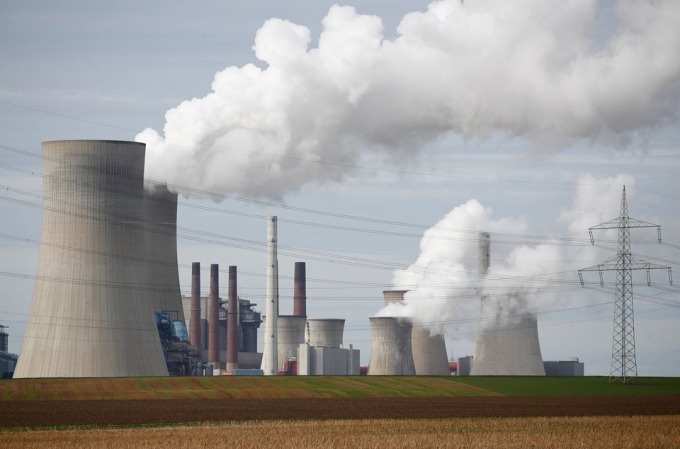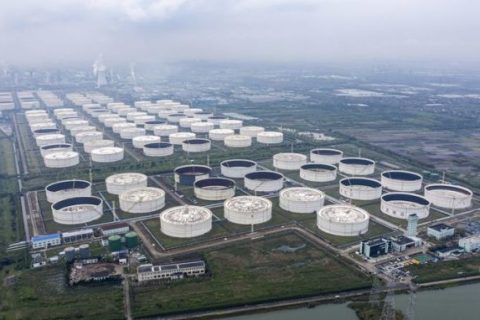The International Energy Agency (IEA) forecasts that global demand for fossil fuels could peak from the end of the decade.
According to the IEA, the hostilities and disruptions to energy markets it caused have helped reallocate global supply and demand. If governments make good on the goals they recently set out to respond to the crisis, they will accelerate the transition from fossil fuels to renewable energy.
Based on such a scenario, the IEA said the increase in coal demand due to the energy crisis would be temporary. Meanwhile, gas demand will stabilize by the end of the decade. As electric vehicles grow in popularity, oil demand will peak around the middle of the next decade, stay around until about 2050, and then decline.
This is the first time that the IEA has released projections of the consumption outlook for the full range of basic fuels, instead of just forecasting oil as before.
“The world of energy is changing dramatically before our eyes. Government responses around the world promise to make this a historic and definitive turning point,” said Fatih Birol, Executive Director of the IEA , evaluate.
The IEA does not expect a rapid decline in the world’s thirst for oil, gas and coal. As part of the global energy supply, fossil fuels have held steady at 80% for decades. The current energy crisis will cause this share to gradually fall below 75% by 2030 and to 60% by 2050.

A coal power plant in Neurath, Cologne, Germany operates in March 2019. Photo: Reuters
Hours after the IEA’s report was released on October 27, Shell CEO Ben van Beurden, said that fossil fuel demand will definitely peak but the world still needs to invest in new projects. to meet that need for many years to come.
“There is no doubt that the reality, demand and supply of oil will peak and predict it will happen this decade. But that doesn’t mean we won’t need new projects,” the tube said. speak.
Ben van Beurden and other oil business leaders have warned that without new investment, supply will fall faster than demand, leading to shortages that countries are grappling with today.
According to the IEA, soaring fossil fuel prices and the recent sudden loss of Russian supply have accelerated the commitment of many governments to develop renewable energy. The agency estimates the total value of commitments to reach $2 trillion by 2030, 50 percent more than the current level.
The IEA said falling Russian energy exports was a key factor in its forecast and the drop could be permanent. Europe’s pivot to renewables will make it a major unlikely market for Russian energy.
Although Russia has sought to redirect gas and oil supplies to Asian economies such as China and India, it also faces challenges there. The EU aims to impose new sanctions on Russian crude oil shipments around the world. Meanwhile, the lack of gas pipelines in the eastern regions of Russia will make shipping to China difficult, according to the IEA.
Meanwhile, several major economies have planned to accelerate the deployment of renewable energy. In the US, the Biden administration’s climate, health care and tax package has allocated about $369 billion for climate and energy programs, including subsidies for electric vehicles and investments in energy. nuclear and renewable.
The EU has outlined a plan to spend $317 billion over the next five years to overhaul energy supplies and end dependence on Russian energy. India, Japan and South Korea also have similar plans. Meanwhile, China is hitting records in wind and solar installations.
“There are really ambitious targets to boost renewables. The crisis is an amplifier and a wake-up call for the energy transition. It has the potential to be a catalyst. really,” said Jasbir Basi, a consultant at London-based Global Counsel.
Despite the IEA’s forecast, many energy economists warn that countries’ plans to reduce fossil fuel use and increase clean energy sources are facing major obstacles, especially in the context of economic growth. Current market chaos and lack of electricity.
Coal consumption has increased in Europe as the war in Ukraine and subsequent restrictions on gas supplies spurred countries from Germany to Italy to keep coal power plants running longer, increasing production. quality or bring factories back after retirement.
European governments are struggling to find alternative gas supplies, studying measures that include long-term contracts and expensive imported infrastructure. According to environmentalists, these solutions can prolong the life of fossil fuels.
Along with that, the unstable global energy market and power shortages over the past year have prompted China – the world’s largest greenhouse gas emitter – to consider approving the construction of more domestic coal power plants. .
Meanwhile, the deployment of renewables like wind and solar has stalled in countries including the US and India, due to factors ranging from policies, trade barriers to transportation bottlenecks and licensing delay.
In the previous forecast, the Organization of the Petroleum Exporting Countries (OPEC) set a timeline much further than the IEA. According to them, oil demand will peak in rich nations starting in the mid-2020s, but demand in poorer countries will continue to grow at least until 2045.
Phien An (theo WSJ)





